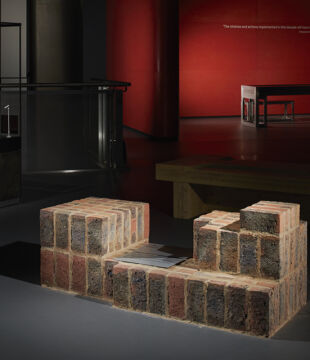
Details
Location: Twyford, Dorset
Brick Manufacturer: Ibstock Brick Limited
Brick Name: Laybrook Imperial Red
Architect: David Kohn Architects
Contractor: Ken Biggs Contracts / 4R Building Limited
About the project
Judges Comment:
“A delightful and unexpected take on Philip Webb's Red House of 1860 that abounds with fun and unexpected details. Wherever you turn you are met with a joyful and unique view but the house is also immensely practical and robustly detailed.”
The Red House, a contemporary new home in rural Dorset, designed by David Kohn Architects, was named RIBA House of the Year in 2022. The jury observed how “the house’s playful eccentricity, including oversized eaves, patterned red brickwork, and contrasting bold green details, jumps out - but this is consistently underpinned by outstanding craftsmanship and attention to detail.”
In naming the Red House, David Kohn Architects sought to unashamedly tie the house to a story about English domestic architecture that stretches back to Hermann Muthesius’ 1904 book ‘Das englische Haus’ and beyond. Muthesius called architect Philip Webb’s 1860 brick masterpiece, Red House, ‘the very first example in the history of the modern house.’ It was both pre-occupied with vernacular traditions of house-building while also unifying the plan and use of the house through ‘material, colour and mass’. The abundant use of red brick was quite shocking in the Victorian period.
From a distance, the new Red House is true to type, a solid brick chimneyed affair under a pitched roof much as a child might draw. On closer inspection, many of those house signifiers are further exaggerated – the green eaves are excessively broad, the bay windows too numerous and the red brickwork used decoratively at a super-graphic scale.
This characterful facade is reinforced through the use of Ibstock’s Laybrook Imperial Red. These thrown stocks have a handcrafted quality that soften the rigid order of elevations. Each brick is meticulously laid in different bonds with corbel details, round header surrounds, arches and angled specials. The brickwork pattern is not just decorative, but innovatively denotes the plan arrangement within – where stretcher bond panels express the functional spaces behind including bathrooms and utility spaces; whilst soldier bond is used to express curved bays and conceal movement joints.
On entering, the ground floor reveals itself to be a staggered enfilade of spaces separated by the careful placement of the service rooms (as expressed by the brick externally). The design carefully responds to the clients’ concern for ageing and a history of degenerative disease in the family, with robust details and wheelchair accessibility incorporated throughout, including a concealed lift. The future-proof home also considers design for changing climate with thick masonry walls, modestly sized windows and deep eaves, serving to protect the façade from the elements and minimise overheating during summer months. Biodiversity has been woven in, with the roof discretely providing a home for the local bat population with access points and nesting boxes carefully detailed into the brickwork.
The simplicity of the interiors provides an intentional contrast to the rich brickwork outside, which is further set off through contrasting green window frames. The use of red brick is part of the local vernacular, a humble material used for farmhouses and cottages, but here laid with such care it’s been elevated, situating it within the canon of English domestic architecture.
Sponsored by Brick Awards

The Annual Brick Awards is an Architectural competition aimed at attracting and showcasing architects wishing to submit their brick projects for recognition and celebration. Attracting 300 entries in 17 hotly contested categories every year, it has become one of the most popular events in the construction calendar. If you wish to sponsor this award, please contact George Spreckley

















